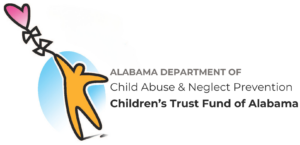International Overdose Awareness Day is held each year on August 31st to help spread awareness around overdoses and reduce the stigma that surrounds drug overdose fatalities. Drug overdoses are tragic occurrences that happen far too frequently, leaving friends and families devastated. When an overdose is not fatal, it has the potential to cause life-long injuries and damage to the brain and body. International Overdose Awareness Day aims to carry the message that overdose tragedies are preventable. In order to help prevent overdose tragedies, it is important to know what happens to the body during an overdose and what can be done to prevent lasting damage.
Overdose Statistics in the United States

To shed light on how many lives are affected by overdose deaths, the following statistics represent drug overdose deaths caused by opioids, benzodiazepines, stimulants, and alcohol. [1][2][3]
- In 2017, more than 70,200 Americans died from a drug overdose
- 28,400 overdose deaths in 2017 involved synthetic opioids like fentanyl
- 130 people die each day from an opioid-related overdose
- 11,537 overdose deaths in 2017 involved benzodiazepines
- In 2017, approximately 13,942 overdose deaths involved cocaine and 10,333 overdose deaths involved psychostimulant drugs
- Between 2010 and 2012, it was estimated that 6 people died each day as a result of alcohol poisoning
Aside from death, drug overdoses can cause permanent damage to the brain and body. In all cases of a suspected overdose, emergency personnel should be notified immediately. Even if a person is still conscious, if they are exhibiting any signs of physical or psychological distress, an overdose may be underway. The sooner medical help is underway, the less likely it is that an overdosing individual will suffer long term effects.
Opioid Overdose
Opioids, both prescription and illicit, suppress breathing. When large amounts of opioids are taken, breathing can be severely slowed or even stopped, resulting in an overdose. As breathing slows down, heart rate does as well, reducing blood flow and the supply of oxygen to the brain. When the brain begins to experience a lack of oxygen, the body begins to cool down and brain damage can occur. Those who experience an opioid overdose may feel clammy to the touch, appear pale or blue, foam at the mouth, vomit, become limp and unable to wake up, and make gurgling noises. Sometimes, prolonged lack of oxygen can even lead to seizures that can cause permanent brain damage, bodily harm, or death.
Fortunately, Narcan, a drug containing naloxone, can effectively treat opioid overdoses if it is administered correctly in a timely fashion. Naloxone comes as an injection and a nasal spray that helps restore breathing and reverse the effects of opioids by knocking opioid molecules off of brain receptors and replacing them.
In the event of an opioid overdose, emergency services should be contacted immediately. Even if Narcan is available, it can only restore breathing for a certain amount of time and other damage could have occurred to the body. After 911 has been contacted, administer Narcan if possible and start CPR. Then, the person should be laid on their side to avoid aspiration. Narcan has little to no side effects and can be administered multiple times as needed, leaving two to three minutes in between each dose, until the person wakes up.[4]
Benzodiazepine Overdose
Benzodiazepines, such as Xanax, Klonopin, Valium, and other tranquilizers are central nervous system depressants that slow down bodily functions and can result in an overdose if taken in excess. A benzodiazepine overdose is characterized by shallow breathing, clammy skin, slowed reflexes, a weak pulse, low blood pressure, extreme dizziness, and blue colored lips and can result in a coma or death. In rare cases, these overdoses can cause serious complications like pneumonia, muscle damage, and brain damage. A fatal overdose can occur when using benzodiazepines only but is more likely to occur if these drugs are mixed with other depressants like opioids or alcohol.
During a benzodiazepine overdose, emergency services should be contacted immediately. In some cases among infrequent benzodiazepine users, an antagonist called flumazenil can be administered to help reverse the overdose. However, it is not frequently used in those who are addicted to benzodiazepines as it can cause immediate withdrawal and seizures. As the patient is being monitored closely while the drugs wear off, they may require respiratory support or ventilation.[5]
Stimulant Overdose
As with any drug that is being abused, those who abuse stimulants begin to develop a tolerance to them where their body needs increasing amounts of a drug to produce the desired effects. When stimulant drugs, like Amphetamine or Adderall, are taken in high doses, there is a risk for an overdose. Stimulant overdoses are indicated by chest pain, cardiovascular problems, muscle spasms, hyperthermia, and abnormal breathing. In addition, individuals experiencing a stimulant overdose may act out in manic behavior and extreme agitation, potentially causing them to harm themselves.
Since heart attacks and strokes are a major concern when dealing with stimulant overdoses, it is important that medical services are attained, and patients will frequently be sedated so that professionals can help manage the patient’s symptoms and stabilize their vitals.[6]
Alcohol Overdose
When too much alcohol enters the bloodstream, life-supporting functions including breathing, heart rate, and body temperature begin to shut down. This can lead to confusion, loss of consciousness, vomiting, seizures, suppressed breathing, and clammy skin. During an alcohol overdose, there is a high risk of aspiration and brain damage. This risk is increased when alcohol is combined with other depressants like opioids or benzodiazepines.
Like all other overdose occurrences, the first thing to do is to contact emergency services. While waiting for medical personnel to arrive, it is important to never leave the overdosing individual alone. Be sure that they are leaning forward or on their side to avoid aspiration. Although it may be tempting to give this person water or coffee, doing so may only worsen their symptoms. Instead, let the professionals take care of the situation.[7]
Preventing Overdose
Preventing an overdose isn’t easy – sometimes, it is unavoidable. However, taking prevention steps early on in the lives of each and every individual is the first step in preventing a future overdose. This means both expanding mental health counseling to children and providing substance abuse education within schools and community centers. With access to mental health resources and extensive education about substance abuse, the underlying risk factors of addiction have an opportunity to be addressed at a young age, deterring youth from abusing drugs and alcohol.
In addition to education and resources, harm reduction services such as needle exchange programs and Narcan availability could be far more widespread than they are today. Needle exchange programs allow those suffering from addiction to have a safe place to use their substances with access to counselors and treatment resources. In the event of an opioid overdose, if life-saving drugs like Narcan were more widely available, many overdoses could be reversed.
Many people who abuse drugs often begin by abusing prescription medication, making it imperative to store prescriptions away from children and teens, practice safe prescribing techniques, and dispose of medications the right way. On the other hand, regardless of prescription medication access, those who are more susceptible to addiction than others may still fall into its deadly grips. For this reason, addiction treatment should be a right for each and every individual suffering – not just a luxury for those who can afford it.
Prevention isn’t easy, but taking steps to avoid drug abuse and being prepared to act in the event of an overdose are crucial factors in saving lives that are tragically taken due to drug overdoses each and every day.
To read more about International Overdose Awareness Day and see how you can get involved, visit www.overdoseday.com
Resources:
- https://www.drugabuse.gov/drugs-abuse/opioids/opioid-overdose-crisis
- https://www.drugabuse.gov/related-topics/trends-statistics/overdose-death-rates
- https://www.cdc.gov/vitalsigns/alcohol-poisoning-deaths/index.html
- https://medlineplus.gov/opioidoverdose.html
- https://drugabuse.com/benzodiazepines/overdose/
- https://www.therecoveryvillage.com/amphetamine-addiction/amphetamines-overdose/#gref









